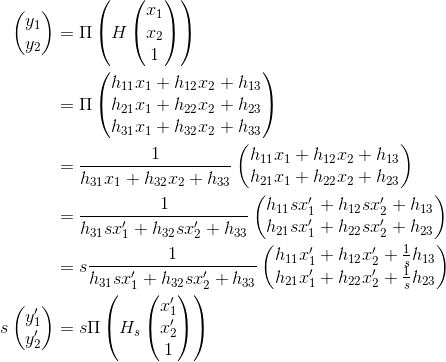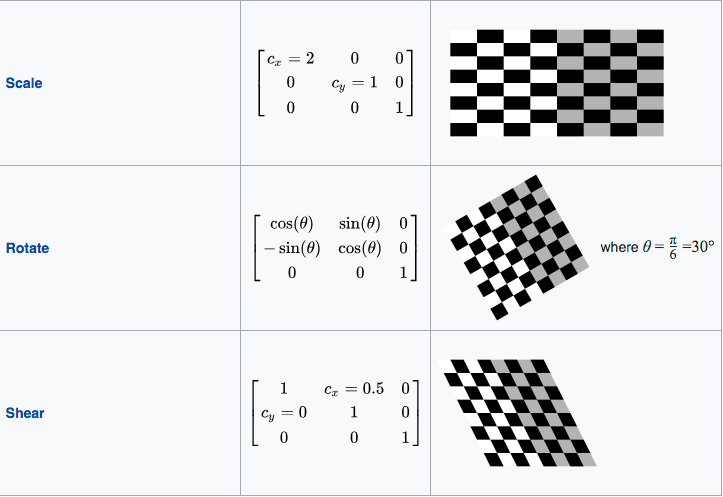I have two planar images A and B I have calculated the homography between these two images using feature points, my question is, if both A and B scale up to double size, let's say A' and B'. How will homography' be? Thank you.
The homography doesn't change. It will be the same as long as both images have undergone the same linear scaling.
The homography is a mapping between two 2D planes in 3D space. It combines at rotation and translation with the camera matrix. If the position of the camera relative to the object has not changed, then a homography calculated from a mapping of points in the object plane to the equivalent points in the image plane will be the same (assuming no noise) regardless of the points chosen.
I think you can modify the homography for the correct scale. Let's assume correspondences are denoted with x and y and the homography maps x to y. If we consider scaled points
we can try to factor s out of the transformation involving the homography matrix like so:
Where capital pi (Π) denotes the perspective transformation (simply dividing x and y component of a 3D vector with its z component). When cancelling s, we would have the equation necessary to apply the homography in a different scale. Here H_s can be read off the previous equation as:
If you compute a homography on a scale different from your "application scale" (e.g. visualization), you should be fine to just compute H_s where s is the relative factor from new scale (denoted with prime) to old scale. For instance, if a visualization is twice as large as the computation choose s = 0.5.
Hmm.. I could be wrong, but I think both answers above are incorrect.
See https://en.wikipedia.org/wiki/Affine_transformation and What do the elements in a homography matrix mean?
As Wikipedia explains, the scale factor in the homography matrix H is
ScaleA = H[row = 0, column = 0] and ScaleB = H[row = 1, column = 1]
The translation (left, right, forward, back) would be
H[row = 0, column = 2] and H[row = 1, column = 2]
The remaining elements of the homography are rotational and shear components.
The homography doesn't change. It will be the same as long as both images have undergone the same linear scaling.
The homography is a mapping between two 2D planes in 3D space. It combines at rotation and translation with the camera matrix. If the position of the camera relative to the object has not changed, then a homography calculated from a mapping of points in the object plane to the equivalent points in the image plane will be the same (assuming no noise) regardless of the points chosen.
© 2022 - 2024 — McMap. All rights reserved.





